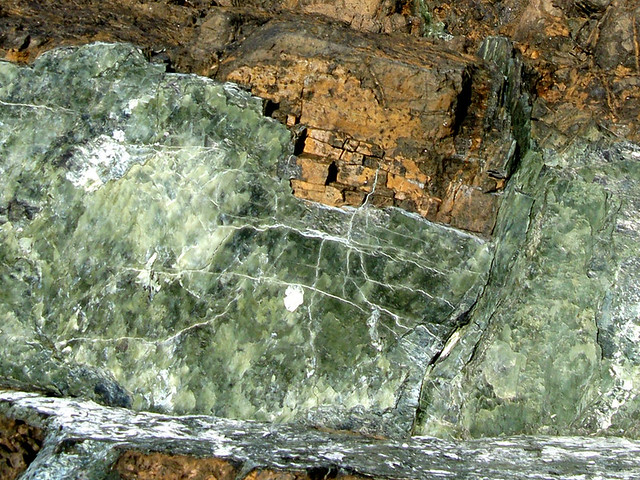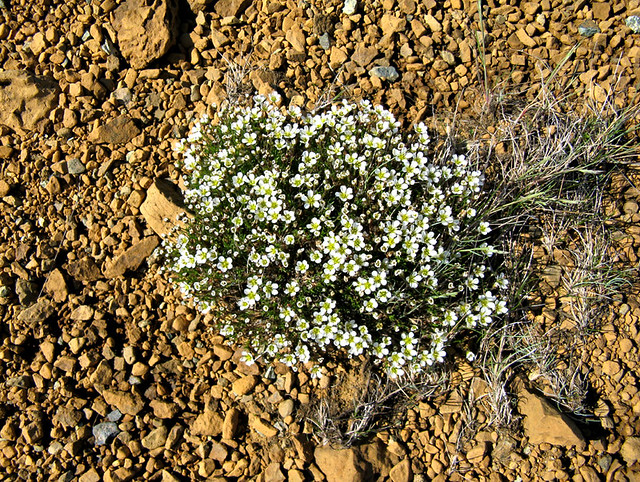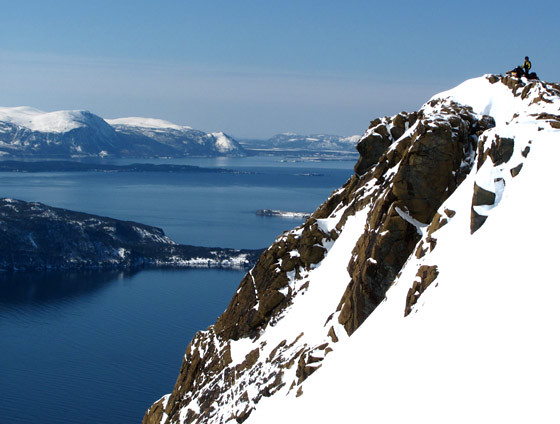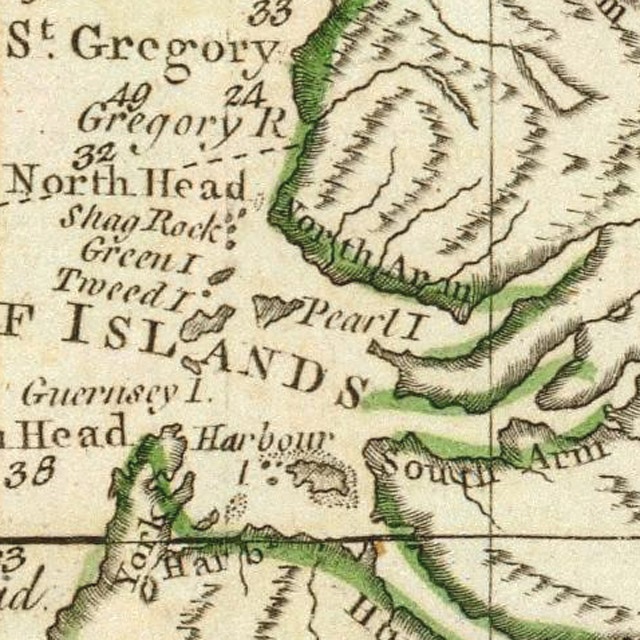
North Arm Massif is composed of two separate mountains ranges: North Arm Hills overlooking North Arm of the Bay of Islands in the east and Gregory Mountains overlooking the Gulf of St. Lawrence in the west. Early European explorers and fishermen sailed along this coastline and sought shelter in its harbours, often naming landmarks to help with navigation. Whether by Basque or French Catholics, Mount St. Gregory (and adjacent cape) were likely named after 3rd century Greek Christian apostle St. Gregory of Neocaesarea who led his flock of followers onto a barren mountain to avoid Roman soldiers. Though pursued, they were not seen and escaped persecution. This barren ophiolite massif of Western Newfoundland reminded early Christian mariners of the story of St. Gregory’s mountain with nowhere to hide.
Together the North Arm Hills and Gregory Mountains form the third – and largest – of the four Bay of Islands Ophiolite Massifs. In the east the Hills rise to a height of 703m (2,306ft), while in the west the Mountains rise to a height of 671m (2,201ft) at Mount St. Gregory. Combined they cover approximately 300 sq kms. The two mountain ranges are connected by a narrow mountain pass between the north flowing Gregory River and south flowing Lower Crabb River. The massif is bordered by Trout River Pond in the north, forested lowlands in the east, North Arm, Bay of Islands in the south, and Gulf of St. Lawrence in the west. Road access is provided by Route 431 to Trout River then dirt roads in the north, and Goose Arm logging road in the east, with trail access provided by the IATNL Overfalls Trail and North Arm Traverse and Cabox UltramaTrex. Cell phone reception is only available at higher elevations on the east and south sides of the North Arm Hills.
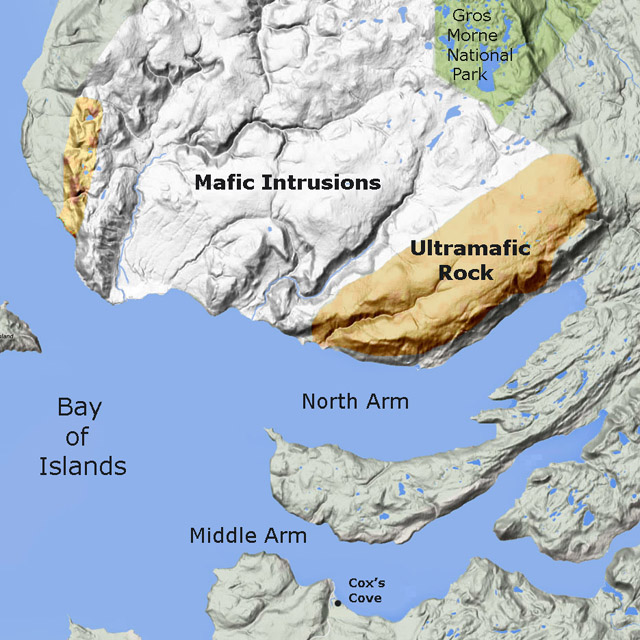
Like the other Bay of Islands Ophiolite Massifs, the North Arm Hills are “broad, ocean-front mesas with enormous alpine tablelands”¹ composed primarily of two distinct geological formations fused together: ultramafic mantle in the east and mafic oceanic crust to the west. The former is characterized by rust-colored peridotite (oxidized when exposed to the elements) and other silicate rock types, while the latter is characterized by gabbro and other intrusive igneous rocks. These formations were forced to the surface by a process of obduction caused by the movement of the earth’s continental plates in a process called plate tectonics. Like the Blow Me Down Mountains, the North Arm Hills also contain large sections of sheeted dykes and pillow lava, making them more complete ophiolite massifs.
The formation of the North Arm Hills spans two geological periods: the Cambrian and Ordovician. The former was the first period of the Paleozoic Era (a time of great geological, climatic and evolutionary change) that began c. 541 million years ago (Mya) with the Cambrian Explosion, when life on earth – primarily in the oceans – rapidly diversified to create representatives of all animal phyla. The Ordovician period followed c. 485 Mya and lasted roughly 41 million years. Life continued to diversify in the ocean, and though dominated by invertebrates such as molluscs and arthropods, vertebrate fish continued to evolve. Over millions of years, the abundant life was transformed into major petroleum and gas reserves. However the North Arm Hills, having been created by igneous and not sedimentary rock, are devoid of both fossils and oil.
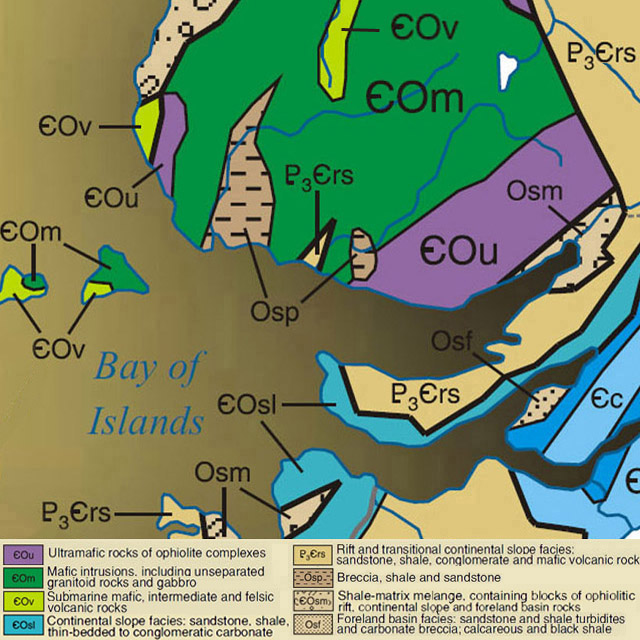
The igneous rocks of the North Arm Hills (and Gregory Mountains) are generally either mafic or ultramafic. The latter are composed of intrusive igneous rock known as peridotite, and include serpentinized harzburgite, dunite, pyroxenite, and lherzolite, while the former are composed of a somewhat more viscous intrusive rock called gabbro that includes diorite and minor trondhjemite. Like the other three Bay of Islands Ophiolite Massifs, these “Hills” (and Mountains) contain some of the best exposures of ophiolitic rock on earth, made all the more visible by the glacier-carved “gulches” that bisect them.
By definition, “ma fic” rocks are high in magnesium and iron (ferrum), while “ultra ma fic” rocks are extremely high in magnesium and iron, to the point they oxidize when exposed to air. As a result, soils composed of these rocks can only support plant species that have adapted to their mineralogical characteristics, including low calcium to magnesium ratio, lack of essential nutrients like nitrogen, potassium and phosphorous, and high concentrations of heavy metals such as iron and chromium. Noteworthy landscapes with endemic species include serpentine barrens at both low and high altitudes, and steep canyon walls with loose scree and low to abundant light.
The North Arm Hills and Gregory Mountains are the most remote of the four Bay of Islands Ophiolites. The former are accessible by road from the east via the Goose Arm Road logging road network between Hughes Brook in Humber Arm, Bay of Islands and Glenburnie in West Arm, Bonne Bay, and from the northwest via Chimney Cove Valley ATV trail off Chimney Cove logging road just south of Trout River. They are also accessible by boat, across North Arm, Bay of Islands in the south (from both Cox’s Cove in Middle Arm and Frenchman’s Cove and other communities in Humber Arm), and across Trout River Pond to the Overfalls Trail in the north.
The Gregory Mountains to the west of the North Arm Hills are even more remote, with road access only via Chimney Cove logging road to the north, starting near Gros Morne National Park’s Trout River Campground. Boat access is possible from the Bay of Islands in the south and Trout River harbor in the north. However waters in the outer Bay of Islands and along the gulf coast can be rough, and weather conditions can change quickly and unexpectedly. Trail routes are in the planning stages and will allow hikers to cross the Gregory Mountains along the north south axis or connect to the North Arm Hills and IATNL hiking basecamp at Stowbridges in North Arm.
The coming of snow changes the character of the North Arm Hills and Gregory Mountains dramatically. With the exception of the occasional rock outcrop, the white blanket covers the rust-colored peridotite and grey gabbro, making the unique mineral composition hidden from view. Before long, eager snowmobilers head to the foothills via Goose Arm logging road to ride the abundant snow. By late winter, the cycles of rain and snow, mild and cold produces a sufficient base for riders to head into the mountains to explore the remotest valleys and plateaus. For out of town visitors, rentals and/or tours can be arranged.
¹ Beyond Ktaadn, Eastern Alpine Guide, ©2012, p. 183

